Text
Valeriano Paños
I will write a more extensive entry about him later, but I wanted to share that he begins teaching at the University that I study at today, Monday April 13th. I take my first class with him tomorrow and am so thrilled to be working with someone with such a unique technical background. Here is a video that I found of him that I just love. I think it really showcases his skills in both flamenco and Spanish Classical. It has a great section of his partner Rafael Estevez as well.
youtube
0 notes
Text
Tientos
Tientos is a palo of flamenco, a musical genre originating in Spain in the mid-15th century. The word derives from the word tentar, meaning to touch, to attempt or to tempt.
The big 1988 Cinterco Diccionario Enciclopedico Ilustrado de Flamencosays the tiento (it insists on the singular, though it says it’s a plural noun) “is a song with three or four 8-syllable lines, usually followed by one or several 3-line estribillos, whose measure is uniform. It’s a recent song, dating from the beginning of this century — derived from the earlier tango, which has the same compas, though the tientos is slower, more solemn and complex.
Tientos is a slow rhythm, typically done in a solemn and emotional manner.
It is majestic, sober and dramatic, with a decidedly ritual air.
In the cited link to the Flamenco Expierence, the author suggests that tangos and tientos share a similar rhythm. This would appear to be accurate as both the palos have an 8-count compás, the major difference lying in where the accents are placed. Below is a diagram explaining both the compás and palmas of tientos .
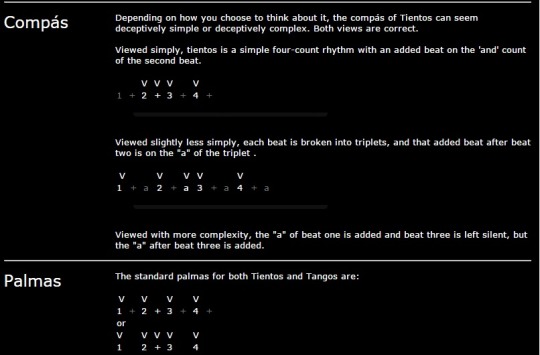
Due to the slow nature of tientos, dancers will often do their footwork patterns, llamadas, remates or contestiations in double time and the cantaor will resume the slower tempo with the letra. Observe this in the video below.
youtube
In accordance with the overall feel of tientos, the letras are often solemn. Here are the some of letras of Carmen Linares tientos “Ya No Peino Pa’ti”.
Si a media noche en tu cama
te despierta un viento frio
por Dios no te de gindama
que son los suspiros mios
que a medianoche te llaman
Though the letras of other palos can be solemn as well, it is a trait of tientos letras to be heavier than others.
Here are more videos to help you get the feel of tientos:
Camaron y Paco de Lucia
youtube
Cuadra Flamenca de La Lupi
youtube
Carmen Linares “Ya No Me Peino Pa’ti”
youtube
Credit:
http://www.studioflamenco.com/About_Tientos.html
http://www.flamencoexperience.com/blog/?p=460
https://depaloenpalo.wordpress.com/2013/04/20/carmen-linares-cantaora-1988/
0 notes
Photo
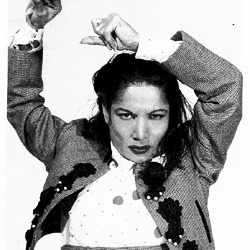
Carmen Amaya : And then she put on pants.
1913-1963
Born in Barcelona
Singer & Dancer.
No formal dance training.
Amaya is credited with revolutionizing feminine flamenco dance. She took the movements of female flamenco dancers away from just the upper torso and arms and added her fast and ferocious footwork.
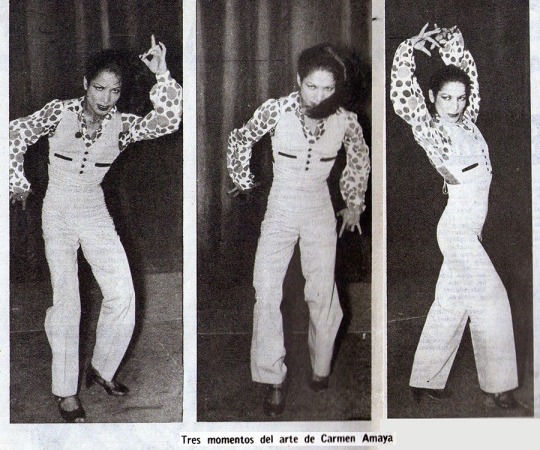
Her hard masculine style of dance was often copied, but many believe she was inimitable and to this day there has never been a dancer to match her ferocious style of dance. Her fast rattling foot work became her trait and it is said that on several occasions she actually put her foot through the stage while performing.
Amaya was born into a long line of gitano flamenco artists. Her father, Jose Amaya aka El Chino, was a flamenco guitarist (there is not much on her father. If anyone has links or information to share, I would love to know.) . Her grandfather, Juan Amaya Jiménez, was also a dancer and her aunt, the late La Faraona.
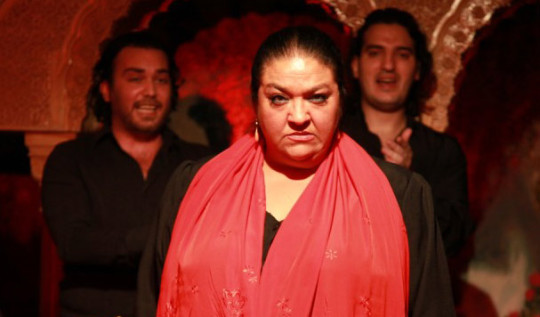
It was with La Faraona that Carmen first went to Paris and even at the age of just ten, she demonstrated that she was going to change the tradition of flamenco dance.
Her and her family traveled throughout the majority of her childhood, beginning in Portugul and then performing all across Latin America, gathering a quite substantial fan base in the process.

It was in Mexico City that Amaya met Augustín Castellón Campos aka Sabicas who is acclaimed to be possibly the best flamenco guitarist outside of Spain. He played for Amaya for many years, all the while forming a romantic relationship with his dancer. Eventually the two split and he died in New York in 1990.
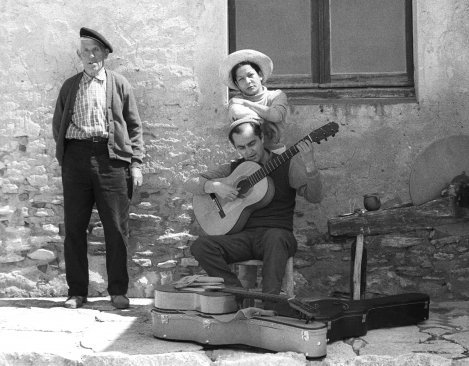
After her separation from Sabiacas she eventually married Juan Antonio Agüero, a guitarist from Santander who cleaned up her financial and family problems, and took over the reigns of her career for the rest of her life.
Fun Fact: Amaya was invited by President Theodore Roosevelt to come perform at a party at the White House.
Fun Mas o Menos Fact: Amaya suffered from severe kidney issues. This is true and it is in fact kidney disease that was the cause of her premature death. I have heard it said that dancing as hard as she did is what helped her to live so long, even with her kidney disease. By sweating from dancing so hard, she was able to release some of the toxins that her kidneys were unable to process through her sweat and extend her life as long as it went. Literally, if Amaya had quit dancing, she would die. Whether or not this is true, it is an amazing piece of imagery that perfectly describes her passion for the art form.
I began this blog with a post on Carmen Amaya because there is no flamenco dancer or flamenco aficionado who shouldn't know her name and what she did to revolutionize flamenco. The phrase “and then she put on pants” has been repeated so many times at the University where I am studying that I cannot even begin to remember who said it first. I do remember thinking that she was going to be a huge inspiration for me (as if I do not have enough of those in my city to begin with) and I was going to look to her and her philosophy of dance for help anytime I needed help. I hear on a daily basis to not hit the floor so hard and I love that, even though the truth of the matter is my musicality and knees would love it if I laid off of the floor for just a few compas, she is the reason that it is socially accepted within the world of flamenco for me to even hit that hard to begin with.
During the peak of her career in the 40’s and 50’s, she was an international cultural icon who combined fury with tenderness—a wild, exotic woman with the fierce pride of Spain and the uncontrolled vagrancy of the Gypsy spirit.
She is everything I aim to be in my dancing.
A documentary titled “Queen of the Gypsies” outlines Amaya’s life and shows never before seen footage of her dancing. It is worth every penny! I could watch it endlessly.
http://gypsyheartproductions.com/video/buy-videos/queen-of-the-gypsies/
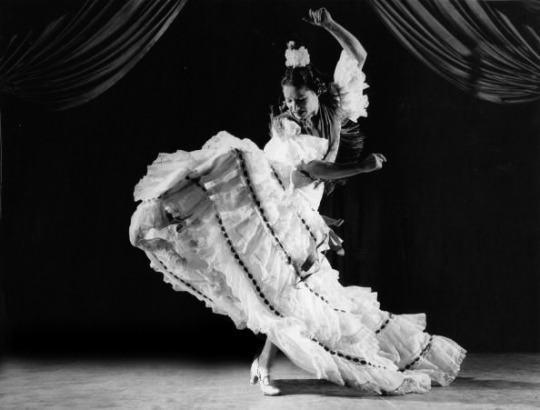
Credit:
http://www.andalucia.com/flamenco/dancers/carmenamaya.htm
http://www.andalucia.com/flamenco/musicians/sabiacas.htm
http://gypsyheartproductions.com/video/buy-videos/queen-of-the-gypsies/
http://www.allmusic.com/artist/carmen-amaya-mn0000180367/biography
http://lavirreina.bcn.cat/en/exhibitions/carmen-amaya-1963-photographs-colita-and-julio-ubina
0 notes